How to Offer Prayers
A gokito follows the same structure as all jinja ceremonies, called matsuri. This is what you can expect.
Table of contents
1 Purification

In Shinto, it is believed that people pick up impurity in their daily lives, both from things that they do, and things that happen to them, such as illness or natural disasters. Purification, called “oharai”, is therefore a central part of every Shinto ritual. Through this, people are thought to recover their natural standing, and resume an active role in society.
Everyone, and everything, must be purified before the matsuri. At most jinja, a priest recites a short purification prayer, and then waves an “ohnusa” over the people and offerings involved in the matsuri, as shown in the picture. Some jinja use a branch of an evergreen tree, with the leaves attached. You should bow your head while the priest is purifying you.
2 Offerings
Offerings are made to the kami as part of the ceremony. They may be placed before the kami during the ceremony, or already be there before it starts. Rice, sake, rice cakes, fish, vegetables, fruit, salt, and water are common offerings.
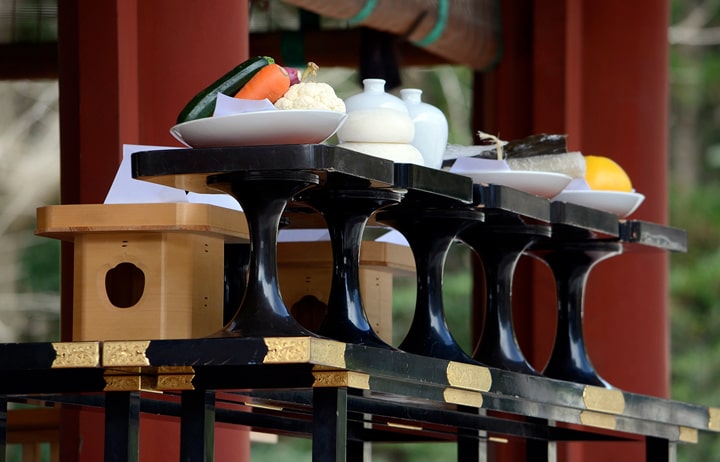
3 Prayer
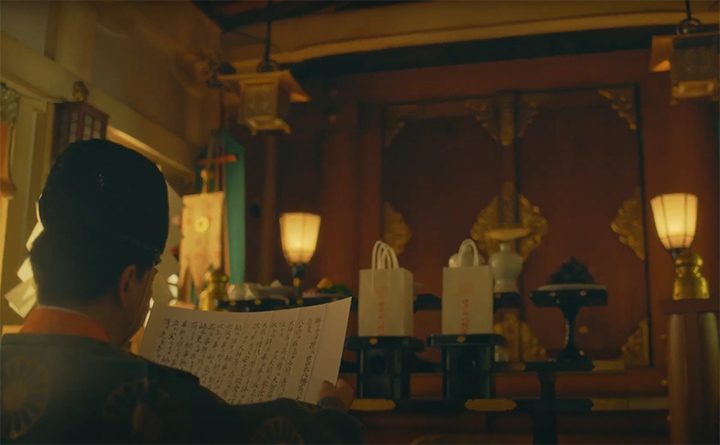
The presiding priest goes before the kami and recites a prayer, called a “norito” in Japanese. These prayers are written in ancient Japanese, and convey your request to the kami. Everyone should bow their heads while the norito is being offered.
4 Sacred Dance
At larger jinja, miko, female attendants, may offer sacred dance, called “kagura”, at this point. At some jinja, you may be able to request this, or it may be part of the normal ceremony. Smaller jinja, however, usually do not have miko who are able to perform the dances.
5 Reverence
After the norito, everyone pays reverence to the kami. This follows the same etiquette as when paying your respects outside the prayer hall and may also involve offering a small evergreen branch with narrow folded paper tied to it, called a “tamagushi”. First, hold it vertically with the leaves upwards in front of your chest, and silently offer your prayer. When you place the tamagushi on the table, the stem should point away from you, with the leaves towards you. It is common for one member of a group to offer the tamagushi on behalf of everyone, but all members should bow and clap together once it has been offered.
The priest then formally brings the gokito to an end.

1 Hold the tamagushi vertically with the leaves upwards in front of your chest, and silently offer your prayer.
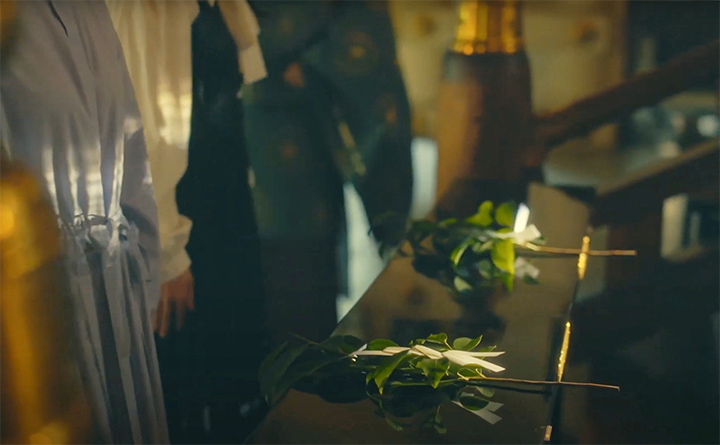
2 When you place the tamagushi on the table, the stem should point away from you, with the leaves towards you.
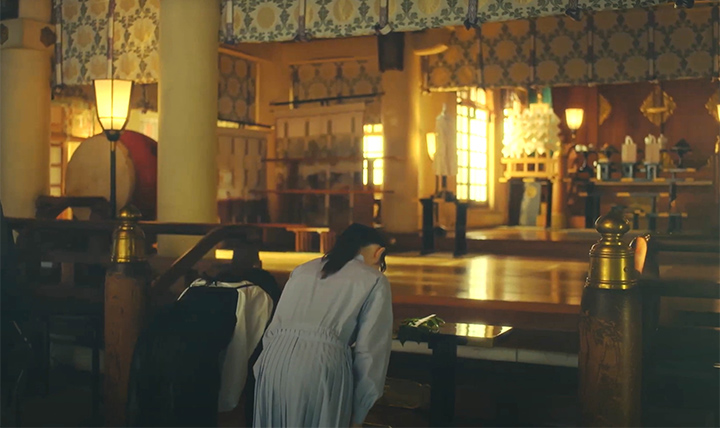
3 All members should bow and clap together once the tamagushi has been offered.
6 Naorai
The “naorai” was originally a meal shared between the people and the kami after a matsuri, and sometimes it still is a proper meal. However, at almost all jinja it has become largely symbolic after a gokito. A common form is for each participant to drink a small amount of the sake offered to the kami, and receive some food that has also been offered. The sake is normally poured into a small and shallow dish as you hold it, and drunk on the spot. For children, or if you do not drink alcohol, please ask the priests or miko, and they will show you what to do. The food is normally for taking away with you, and depends on the jinja: dried bonito flakes and Japanese-style sweets are both common options.
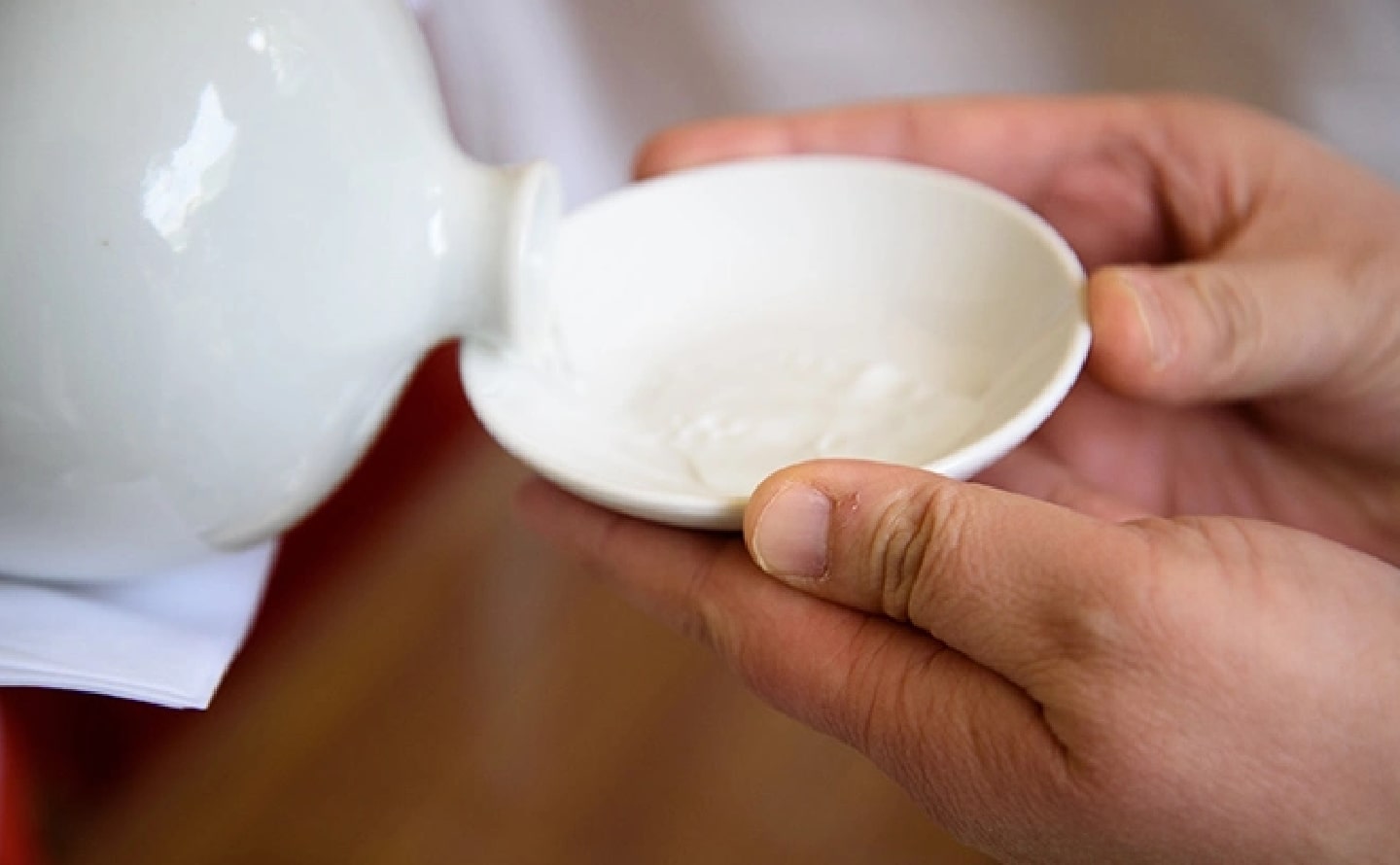
Glossary
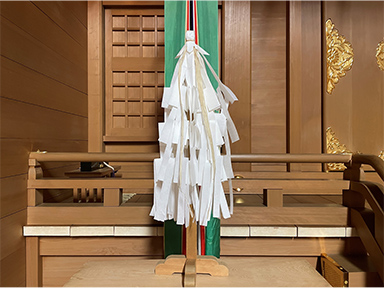
A wand used in Shinto rituals. It is usually made of wood with a number of shide paper streamers attached and is waved over the heads of objects and worshipers being purified.
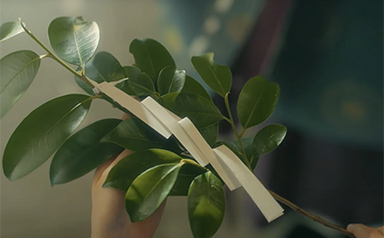
Normally, a sprig of the sakaki tree (Japanese cleyera), with a shide paper streamer attached. It is formally offered to the kami by both priests and worshippers at formal prayers.
A Japanese broadleafed evergreen tree which is used in various sacred Shinto rituals as an offering to the kami, purification wand and to delineate sacred space.
A female attendant assists the priests in performing rituals, offering amulets and performing sacred dance.

